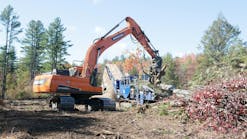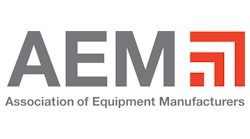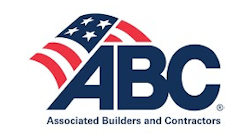After having just attended the World of Concrete event in Las Vegas, I see that innovation and improving technologies continue in the manufacture of heavy equipment. I see some of the changes that make operation of the iron more user-friendly so as to entice a new generation of operators and help fill some of the skills gap. Other changes are developed for increased efficiency and productivity. A lot of the advancements are in the software of telematics and machine control, which could inevitably lead to automated dirt movers, as a number of manufacturers admitted to me.
But the future of dozers, excavators, and loaders working on their own like so many agriculture machines already do . . . is still distant. And between now and then, we have to work with today’s telematics and machine control.
I spoke to Murray Lodge, a vice president at Topcon Positioning Systems at World of Concrete. He told me that more and more contractors are realizing the benefits of technology.
“The technology, the impact that it can have on a contractor’s business is tremendous,” he says. “If they look at going to buy a new piece of equipment from one model of a dozer or one model of a grader to the next, you’re talking about a few percentage points of an increase in productivity. When you go to a control system that you can put on a piece of equipment, you’re talking about 20, 30, 50%, depending upon the application, increase in productivity.”
He goes on to say that, “The adoption is really starting to increase dramatically. I think we’re at the tipping point where it’s starting to take off. A lot of that has to do with education. In the past you had the early adopters—they were always looking for something new. So they got into this on their own. But what’s happened over time now is you’ve got so many people publicizing the success they’ve had and so people are saying now it’s not far-fetched. This thing is for real.”
Let me add a caveat to that. The technology alone is not enough. I also spoke to Steve Warfle, a product manager at InSite SiteWork. These were his first words when we started talking about technology:
“Training winds up being very important. You can make the best technology in the world, but if you don’t have trained users, they’re going to fail.”
Warfle’s strategy is to train early and often—and one cost-effective way of doing it is online.
“A good feature in the product is important, but if the customer doesn’t know how to use it, what value does it actually have? So training winds up being just as important.”
One pleasant side effect of training he describes is a drop in the use of tech support.
“When a customer has gone through training, we have an example of things that they’ve learned that we can use to help solve their own problems. They’ll have a problem with a CAD file and we’ll say ‘Remember when you went through the CAD training . . . ‘ you’ve got a base knowledge that makes tech support not only less frequent, but less complicated.”
Technology in the operation of heavy equipment will continue to advance. The cost of this technology will continue to drop. That’s going to mean more and more end users.
(Cue the theme to “Rocky”)
Let the training begin.









